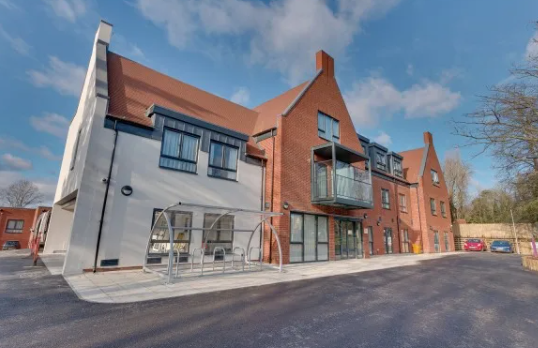Eco-Friendly Care Homes: How to Build a Sustainable Facility
March 24, 2025

Did you know there are 16,566 care homes in the UK? Out of all these care homes, approximately 70% offer residential care facilities. With such a rise in the number of care homes in the UK, a focus on sustainable and eco-friendly facilities is surfacing. If you look around, not only care home facilities but also construction, business, and other sectors are now focusing on sustainability. The primary reason is a focus on reducing carbon emissions through business and other activities. However, the process is not free of challenges. You must have a detailed plan to complete an eco-friendly care home project. In the following sections, we will explore what it means to be an eco-friendly care home facility and the challenges you might face.
Why Sustainability Matters in Care Homes
The United Nations Sustainable Development Goals (SDG) 13 aims to reduce the impact of climate change. It predicts that by 2035, the overall temperature of the world will exceed 1.5°C. This might happen due to careless consumption of energy. The growing need for care homes in the UK calls for adopting a sustainable approach. From construction design to interior decoration, a sustainable approach should be prevalent in all aspects of a care home facility. Besides, the UK is legally committed to becoming net zero by 2050, which sets the ground for care home facilities to achieve sustainability. Moreover, adopting a sustainable approach in building care homes helps reduce energy consumption. Advanced innovative technologies, such as solar panels or natural insulation techniques, improve the quality of life for residents. Let's see what the key elements of sustainability are in an eco-friendly care home facility.
Key Elements of an Eco-Friendly Care Home
An eco-friendly system aims to reduce total energy consumption from building design to utility facilities. The installation of renewable energy solutions, recycled building materials for constructing care home facilities, and many more are important to making it eco-friendly.
Energy-Efficient Design: To maintain the indoor temperature of a care facility, you must ensure that proper insulation is installed. You can also install triple-glazed windows to keep the heat inside your house, reducing the overall energy consumption. Another way of doing this is by creating a design that allows natural light into the facility.
Renewable Energy Solutions: Solar panels are becoming a go-to option for residential clients or customers to reduce the cost of electricity. You can implement the technology under the same roof as a care home facility. You not only save on the cost of energy consumption, but you can also sell the access energy to the utility provider. You will receive an energy credit and use it as and when required.
Sustainable Building Materials: How can you reduce your carbon footprint during the construction process? Use low-carbon concrete materials, recycled window frames, wood, and more. You can also use emitted carbon from the cement industry in your concrete, which makes the building structure strong and reduces carbon in the environment.
Smart Technology Integration: With the integration of modern technologies, you can save energy consumption in care home facilities. For example, elderly people might forget to turn off the light or may not access the control facility easily. Automated lighting, heating, or air filtration systems work wonders in such cases. Besides improving their quality of life and comfort, such innovative technology helps to reduce energy consumption in care home facilities. Now, you can install all of these facilities in a care home, but it all comes down to cost and durability.
Cost vs. Long-Term Savings
A sustainable approach to building a care home might benefit you in the long run, but it is costly to install in the first place. If you install innovative technology in the care home, it will attract a hefty investment. Besides, sustainable design and planning also invite sizeable initial investment. However, you can be sure of its long-term benefits. Challenges and How to Overcome Them Yes, it's true that installing sustainable technology and implementing innovative care home design is costly at the first stage. However, if you consider the long-term benefits for the residents, then the sustainable approach weighs more in comparison. Besides, if you properly maintain the facility and train your staff accordingly, you can enjoy the benefits much longer.
Conclusion
First, an eco-friendly care home helps you reduce the overall carbon footprint. The health and well-being of the residents are also taken care of through a sustainable approach. You may integrate innovative technology and care home design to benefit from an eco-friendly facility. To help the UK achieve the net zero target by 2030, use a sustainable and eco-friendly care home facility. Contact care home builders to complete the construction of an innovative and eco-friendly care home facility.
Recent Blogs
- How to Fund your Care Home Build?
- Outdoor Spaces in Care Homes: Why Gardens Aren’t a Luxury — They’re Essential.
- The Blueprint for Better Air Quality
- A New Way of Living for Elderly People: Blending Innovation and Technology in Care Homes
- Build or Renovate? Making the Right Choice for Your Care Home